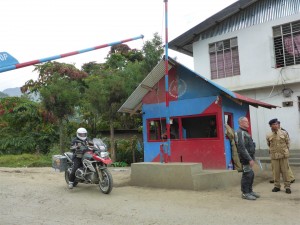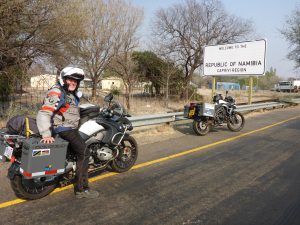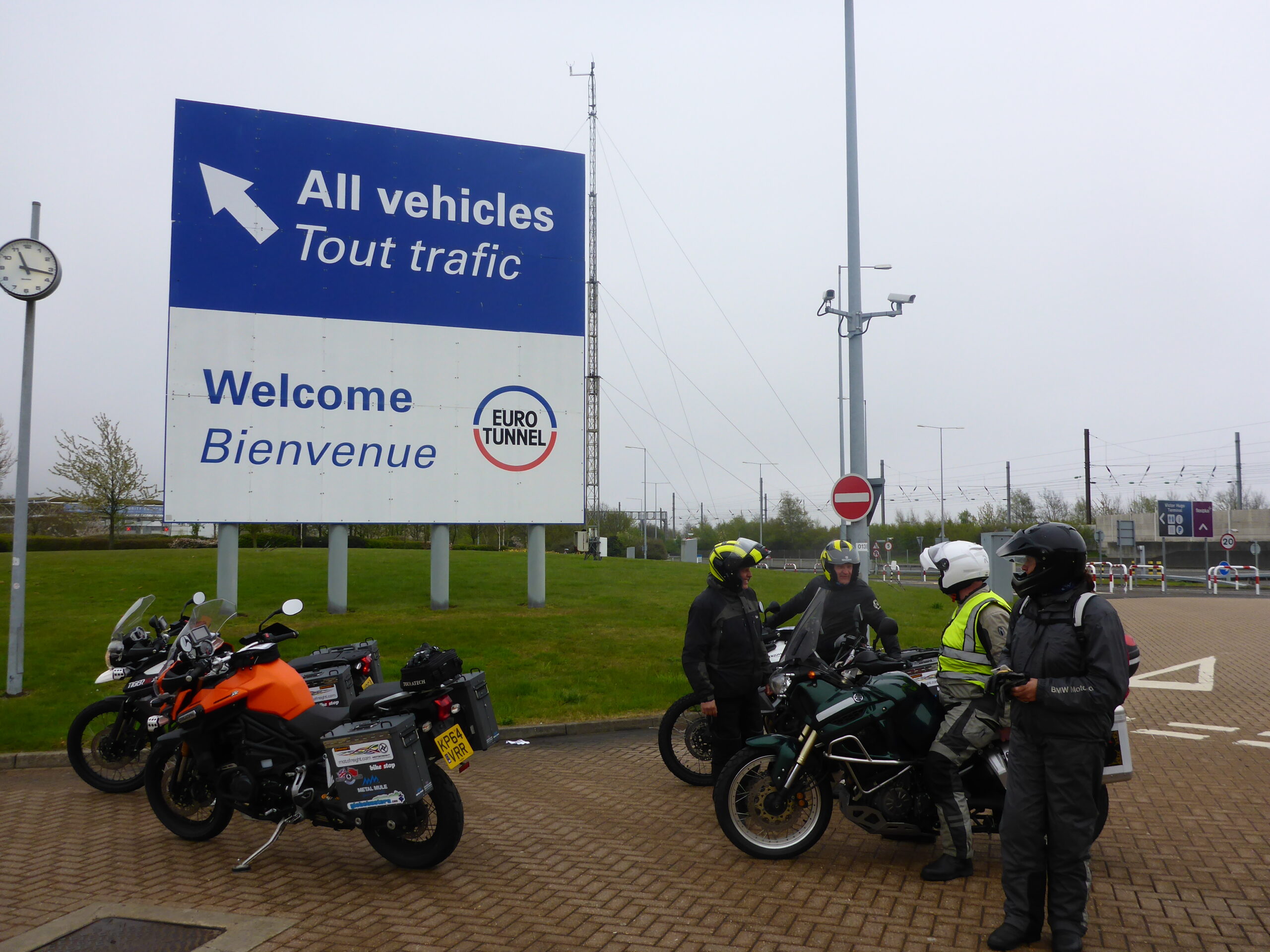This is our top advice for getting your motorcycle across borders with ease! We take the freedom to cross borders for granted in Western Europe, and even though we are now outside the EU, taking your motorcycle into the EU and travelling between countries remains straight forward. However, once further afield that the UK & EU, riding a trip like the Trans Americas, traversing a frontier with your bike can become a long and unfathomable process. If you don’t prepare yourself for it – physically and mentally – and it can quickly turn your trip sour, or halt it altogether.

Border Processes
In essence, passing between two countries comprises four basic steps. First, you enter yourself into the country at immigration. Secondly, you enter your bike with customs. Thirdly, upon leaving you to get your passport stamped out and finally, you exit your bike. Simple in theory, but in practice every border you come across will be different, and faced with masses of locals, being jostled for money, and a random collection of anonymous sheds/buildings to trawl through, you’ll forget it all instantly.
Quick Tips
- Push the very English concept of queuing out of your head and ride straight to the front. If there is a long line of lorries at the border, ride past them and get to the front.
- Take your time to suss-out your surroundings and make sure your bike is as secure as possible; borders can attract a strange array of characters and foreign travellers on big bikes attract them all.
- Don’t leave valuables on your bike at a border – cameras in tank bags are easy pickings.
- Using fixers at borders may be a more efficient way of getting yourself through. They will charge, but if you gain a few hours and avoid tearing your hair out, then it can be money well spent.
- Accept that part of the system may be under-the-table payments to the man with the stamp. If it’s only a few dollars, taking a stand on principle and refusing to pay can mean a prolonged and tedious experience.
- NEVER ever throw away any piece of paper given to you at a border, no matter how insignificant it may seem at the time. Sometimes that scrappy handwritten receipt may be required to leave the country.
- Before you leave the border post, check you have got all your documents back and that any permits issued for your bike are accurate – in particular check the VIN and number plate.

Immigration
- Firstly, make sure you passport is valid for travel. Normally your passport should be valid for at least six months from the date you arrive and there should be a full blank page for the entry and exit stamps for each country.
- Immigration is usually the quickest part of the process to get your passport stamped. Sometimes you may need to fill out a tourist entry form and you may get a copy of this to keep with your passport. Check the days that you have been given in the country.
- Hopefully, you’ve done your homework and if you need to get a visa in advance of entry, you have got one already, or else you won’t be getting in.
Getting Your Bike through Customs
- It’s Customs job to issue you the paperwork to allow your motorcycle temporarily into the country on a tax free basis. This procedure is used for tourists using their vehicles for tourism purposes. The process can vary around the world, but often means Customs Officials physically checking your motorcycle VIN and engine number directly to your documents.
- Therefore, before leaving home check all your documents. Make sure the chassis (VIN) and engine number on your registration or title document matches the physical numbers etched onto your bike and engine block. Also check that your name on these documents is the same as on your passport.
- In many countries, it is common for Customs to issue a Temporary Import Permit (TIP) for your motorcycle. Check this carefully to ensure it is correct. It is very common for mistakes to be made. And don’t lose it. You are required to submit the TIP when you exit the country and if you don’t have it, there will be problems. We take a photo of it on our phone, just in case.
- Certain countries require a “Carnet de Passage” instead of the TIP. The Carnet is an import/export guarantee that the bike will leave the country. In the UK, the official carnet issuing organisation is called CARS www.carseurope.net. Customs will stamp the Carnet to show entry and exit of your motorcycle. Again, don’t lose the Carnet. You are required to submit it back to CARS when you get home to receive back the deposit you will have paid to them.
- Some countries, such as China or Vietnam, will not allow foreign motorcycles through the border unless it has been pre-authorised in advance. You’ll need an in-country agent to sort that for you.
Other Processes
- Some borders will have an agricultural check. They look for food and you may find yourself dumping dairy products, fresh meats and fruit in the bin.
- Others will require fumigation of the bike. It consists of a person spraying insecticide over the wheels of your bike or you riding through a trough of insecticide.
- Just when you think you’re done, there can be a final police check of all your documentation and then another check by the security man in charge of raising the barrier.
- Once through, ride far enough away for people not to bother you, then stop on double check all your documents. If there is a mistake on your TIP, you need to get it changed there and then. Don’t be tempted to ignore it. And make sure you have got all your original documents with you, as it’s easy for an official to accidentally retain them.

Documents You’ll Need to Cross a Border
- Passport – mandatory for all borders. It needs to be valid for at least 6 months after your date of departure from the country you are entering.
- Vehicle Registration Document (in the UK, V5 / logbook) or Title – mandatory for all borders, although blagging your way across with good copies is not unheard of.
- Driving Licence – often requested. The photo card will normally do.
- International Driving Permit(s) – occasionally requested, but normally your driving licence from your country of residence suffices. In the UK, you can get International Driving Permits from the Post Office. Make sure you know if you need a 1926, 1949 or a 1968 IDP, or all!
- Third Party insurance for your bike – sometimes requested by police. Some countries require the obligatory purchase of country-specific local 3rd party insurance at the border (it’s normally cheap and covers you for very little).
- Carnet de passage for your bike (depending on country) – required by many African and Middle Eastern countries.
COVID-19
COVID-19 has also added to this list of documents. Depending on the country you are visiting, you may need Proof of Vaccination, negative COVID-19 test result, passenger locator form, proof of travel/medical insurance covering you for treatment from COVID-19, etc so make sure you check carefully via the FDCO Travel Advice.
Kevin and Julia









